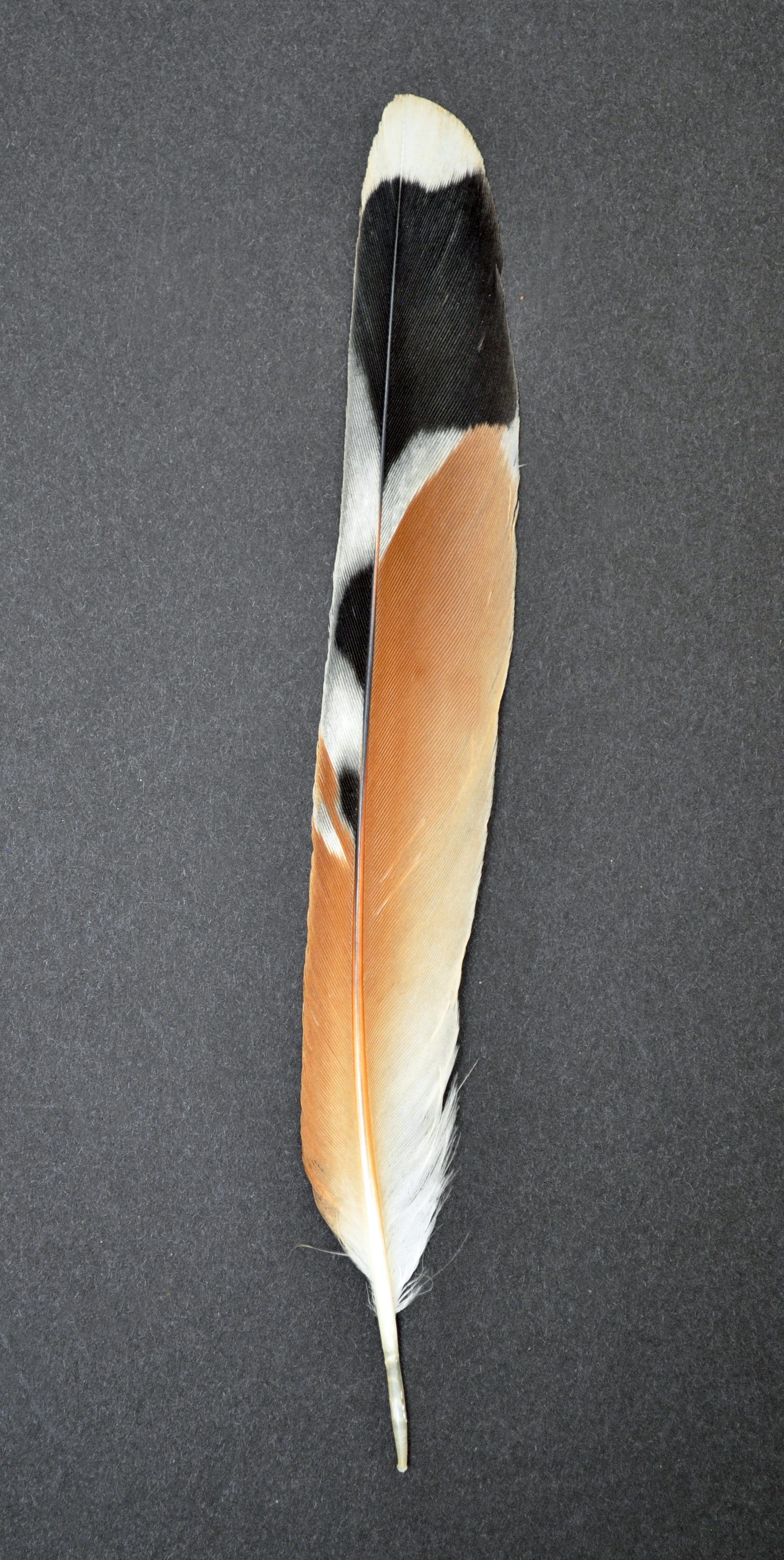| Identify My Feather | Browse Scans | Search Scans | Glossary | More Information |


ABOUT THE FEATHER ATLAS PROJECT












Information on the Scans and Image Processing:
For each species, the Feather Atlas typically illustrates all the primaries (outer wing feathers; usually 10), 10-12 secondaries (inner wing feathers), and six rectrices (tail feathers) from an individual bird. Some scans from the early days of the Feather Atlas show a combination of primaries and secondaries ("wing scans"). We are in process of re-scanning these to show separate images for primaries and secondaries.
In all cases, the feathers from the right wing and the right side of the tail are shown, with the outermost feather always on the left. Feathers are shown in dorsal view. For a few species with distinct patterns on the underside of the feathers, a ventral view is also provided.
A data table of total feather lengths and vane lengths is provided for each scan, beneath the image of the scanned feathers. This table also summarizes age, sex, and locality data for the specimen represented in the scan. For more information on how the scans were created, go to the Methodology section. Definitions of feather terms, with illustrations, can be found on the Glossary page.
All feathers on the Feather Atlas come from salvaged dead birds; no birds are killed to provide specimens.
|
Last Updated: March 7, 2025
U.S. Fish and Wildlife Service Home Page | Department of the Interior | USA.gov | About the U.S. Fish and Wildlife Service | Accessibility | Privacy | Notices | Disclaimer | FOIA |
 |
|
